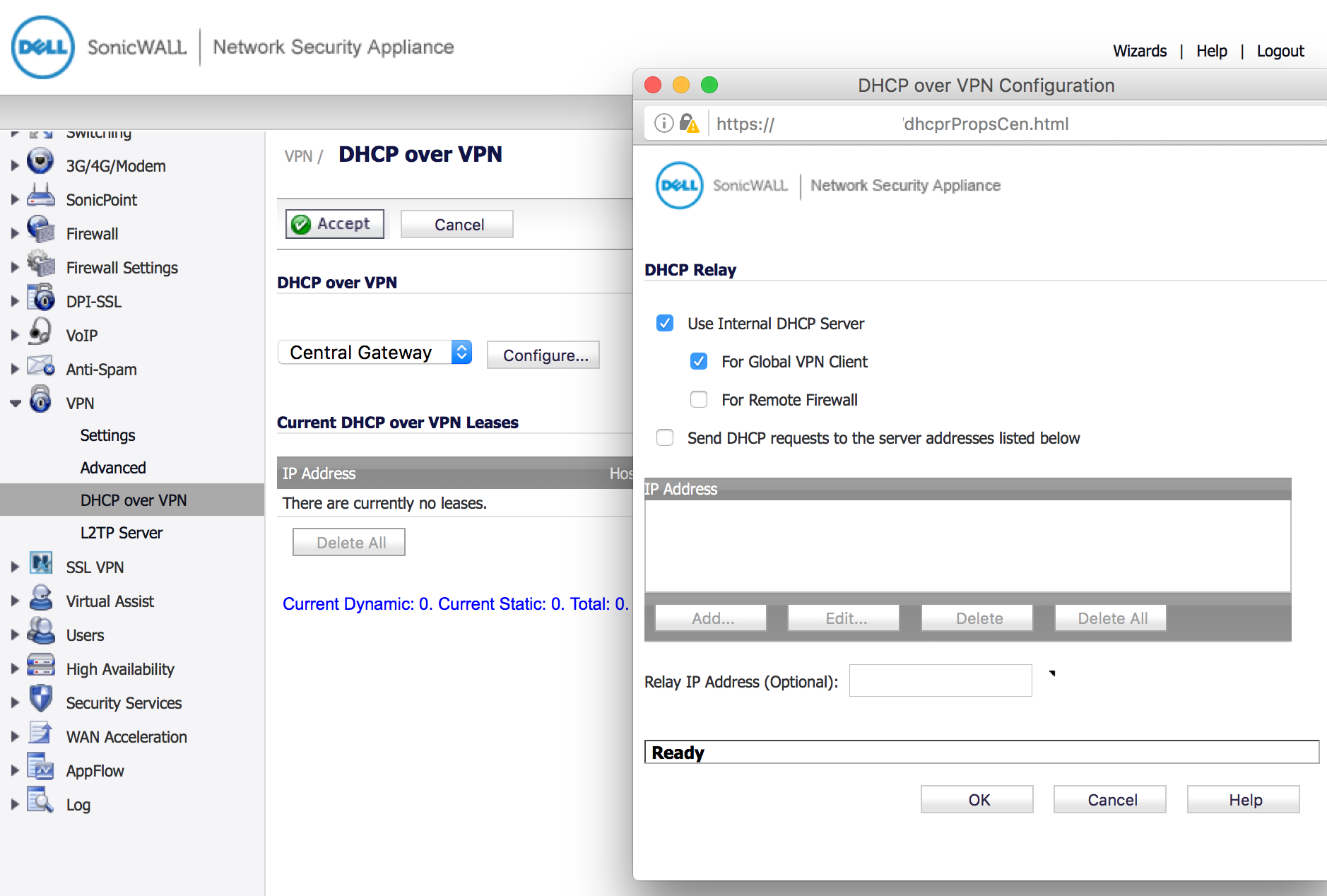

And yes you need to have a static nat for it to work properly. You need to make sure your Sonic Firewall supports it. The Cisco 1720 won't know the differance. This allows for easier and greater control over how you manage. However NAT a IPSEC is not a problem as long as your firewall supports it. Unifi Router Point To Point Vpn Setup With Sonicwall And Vpn Port.
#VPN TRACKER NOT WORKING BEHIND SONICWALL UPDATE#
So my recommendation is to use the SonicWALL NetExtender (SSL VPN) to avoid the issue. All Local users are, by default, members of the Trusted Users and Everyone groups. One of Expressvpn Pfsense Not Working the 1 last update 9 best features of. This is because of the features that SonicWALL provide that most xDSL etc. The issue due to either your ISP modem / provider is blocking the VPN legacy port and I assume you are using the Global VPN Client. I was going to configure a static NAT on the Sonicwall firewall so that VPN clients would connect to a address and the Sonicwall firewall would then NAT this to a 192.168.0.x address on the Cisco router. Connecting your SonicWALL firewall (behind a NAT router) We would always recommend having the SonicWALL firewall in NAT mode and controlling your inbound routing via the SonicWALL interface. My question/concern is will having the Sonicwall firewall performing NAT cause a problem with VPN clients connecting to the Cisco 1720 router (configured as a VPN endpoint)?

#VPN TRACKER NOT WORKING BEHIND SONICWALL HOW TO#
These VPN users need to access the servers on the 10.10.10.0 subnet The chapter discusses the concepts of virtual private networks (VPNs), how VPNs operate, and how to implement VPN tunnels using Internet protocol security.

In some cases, Firewall Admins might have to log in to remote side firewalls and SonicWall allows us an option to do that as long as the remote side firewall has HTTPS management enabled on VPN.For detailed instructions on Firewall management over VPN please refer to the. Many do not work as advertised, some may even sell your data, and most will leave your networks vulnerable to attack. My design is attached as a JPG file and VPN clients would use a pool of addresses configured on the Cisco 1720 (configured as a VPN endpoint) and would be something like 10.10.10.150 - 10.10.10.200. In deployments spread across multiple sites, VPNs are created for the secure transfer of traffic from one site to another. I'm trying to set up a network with the following design and wanted to see if there would be any problems with remote users being able to make a VPN to the Cisco router configured as a VPN endpoint.


 0 kommentar(er)
0 kommentar(er)
